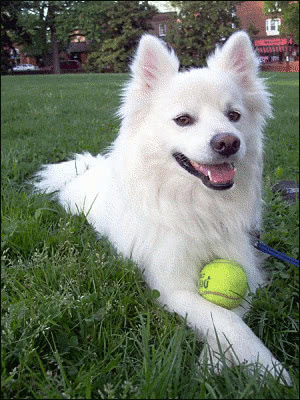 d 10 science courses, in Ontario. Since then I have been contacted by several readers who have asked me, “But what am I going to teach them?”And that my friend is the big question!
d 10 science courses, in Ontario. Since then I have been contacted by several readers who have asked me, “But what am I going to teach them?”And that my friend is the big question! The Ontario Ministry of Education provides us with well thought out course outlines as well as detailed course profiles. These resources are an excellent starting point, especially for the new teacher. But, due to the nature of the learner in these classes I suggest that these two high school science courses are probably the ones with the most flexibility built into their curricula.
There are five units of study set forth for each of the courses. In grade nine they are:
Unit 1 Scientific Inquiry: Science in Daily Life
Unit 2 Biology: Staying Alive
Unit 3 Physics: Electrical Circuits
Unit 4 Chemistry: Properties of Common Materials
Unit 5 Making Personal Decisions
In grade ten they are:
Unit 1 Scientific Inquiry: Science in Media
Unit 2 Biology: Living Together
Unit 3 Chemistry: Interactions of Common Materials
Unit 4 Physics: Using Electrical Energy
Unit 5 Community Action Plan
The Ministry’s intention for the course is that the first units (Science in Daily Life and Science in the Media) be interwoven throughout the course content. In the grade nine course students examine personal and workplace situations with an emphasis on health and safety, for both themselves and others. In the grade ten course relationships between the student and the environment, the effect of individual choices and actions affect the community, and an individual can make a difference in his or her community.
It did not escape my notice that when the entire high school science curriculum was overhauled by the Ministry in 2009 the only courses that were left untouched were the SNC1L and SNC2L courses. I don’t know why this is, but I am sure that the Ministry has their reasons. One consequence of their failure to act means that these are the only two courses offered in my science department that are not subjected to the “big ideas”. The “big ideas”, as every high school teacher in Ontario knows, are the over arcing themes that the learner needs to take away from the course with them.
As an experienced science teacher who is intimately familiar with the documents used in our system I would venture to suggest that these are the big ideas:
Grade 9 – Health and Safety
Grade 10 – The Environment and what one can do to keep it healthy
So what should one teach? Here’s what it comes down to:
1. What the students want to learn,
2. What you are comfortable teaching,
3. What facilities are available to you?
What the Students want to Learn
The units defined by the Ministry and listed above are great suggestions, I have focused on all of them in various ways over the years but what one should really teach is what the students want to learn! How do I know what the students want to learn? Simple, first of all I ask them and secondly, I observe them.
It is not uncommon to have non-verbal students, or those identified with other types of communication exceptionalities, enrolled in these science classes so asking them has to be done in a different manner than just standing in front of the class and asking, “What do you want to learn ?” Instead one must set the stage and employ some unconventional techniques to get the students to communicate their desires to you. I have the advantage of teaching in a real science lab so there are lots of visual prompts all around my room to get kids thinking and talking about science, these include lab equipment, posters, an aquarium, books, safety equipment, the layout of the room, examples of student work, a word wall and even an attached greenhouse.
?” Instead one must set the stage and employ some unconventional techniques to get the students to communicate their desires to you. I have the advantage of teaching in a real science lab so there are lots of visual prompts all around my room to get kids thinking and talking about science, these include lab equipment, posters, an aquarium, books, safety equipment, the layout of the room, examples of student work, a word wall and even an attached greenhouse.
To get the kids thinking about science and what it is we often do a walk-about where I point things out and invite discussion about them and also ask lots of open ended questions. Such questions usually begin with a how, what, when, where, and why. So I can point to a glass-fronted cabinet full of beakers and ask, “What could these beakers be used for?” or I can take the students into my greenhouse and ask, “Where could all these plants have come from?”; or I can offer a carrot stick to the turtle in my aquarium and say, “Why does this turtle like carrots?” The beauty of asking opened ended questions like this is that there are (almost) no wrong answers and gradually everyone becomes engaged, even if they are not talking.
The question remains, “What do you want to learn about?” After the students have completed their walk-about I give them large (8 cm x 13 cm) sticky notes and have them write, draw, sketch or DOODLE the answer to the question. Oh yes, research tells us that doodling is actually thinking in disguise! Each student is invited to tell the class what is represented on their note and post it on the front board. After class, I collect all the sticky notes, jot down what they mean and file them away. Now I have my ideas for the semester! Inevitably you will have someone who wants to “blow things up” and someone who is interested in “outer space”. The first is easily accomplished by demonstrating blowing up a gummy bear whereas the second is an excellent segue into a research inquiry.
 This unit included not only a research project into maintenance of various pets but an experiential field trip to a pet store where students were presented with facts about the costs of a keeping a pet as well as a classroom visit from a therapy dog. On the other hand I once taught a student with Tourette syndrome whose tic was to shout out words associated with genital anatomy. That semester we did not study reproduction! Another time I had a student with extreme sensitivity to aromatic chemicals, a consideration to keep in mind when deciding what chemistry labs to do.
This unit included not only a research project into maintenance of various pets but an experiential field trip to a pet store where students were presented with facts about the costs of a keeping a pet as well as a classroom visit from a therapy dog. On the other hand I once taught a student with Tourette syndrome whose tic was to shout out words associated with genital anatomy. That semester we did not study reproduction! Another time I had a student with extreme sensitivity to aromatic chemicals, a consideration to keep in mind when deciding what chemistry labs to do.
What You are Comfortable Teaching
 Another important thing to consider when planning your semester is your own strengths and weaknesses. One of my passions is caring for the environment. I have kept a vermi composter for years and have integrated it into many lesson plans, which I will blog about soon. Go with what you know and love, your passion is contagious!
Another important thing to consider when planning your semester is your own strengths and weaknesses. One of my passions is caring for the environment. I have kept a vermi composter for years and have integrated it into many lesson plans, which I will blog about soon. Go with what you know and love, your passion is contagious!
What facilities are available to you?
The facilities available to you are also an important consideration when planning your curriculum. For example, if you have no fume hood you probably don’t want to be blowing up gummi bears! If you don’t have running water you are limited even more. If you are in a p ortable, may God Bless you! Since I have a greenhouse I do lots of projects that involve plants, their germination, fertilization, growth rates, etc but don’t dwell on what you don’t have, look around you, take advantage of what you do have! Your biggest asset is the students and no matter where you are assigned to teach you will have those! And never overlook the myriad of learning opportunities right outside your classroom door – both inside and outside the school. Setting up a school recycling program or doing an electrical use audit gets the students out of their desks and into the rest of the building. And once you walk through the school doors, even if you remain on school property the possibilities are limited only by your creativity!
ortable, may God Bless you! Since I have a greenhouse I do lots of projects that involve plants, their germination, fertilization, growth rates, etc but don’t dwell on what you don’t have, look around you, take advantage of what you do have! Your biggest asset is the students and no matter where you are assigned to teach you will have those! And never overlook the myriad of learning opportunities right outside your classroom door – both inside and outside the school. Setting up a school recycling program or doing an electrical use audit gets the students out of their desks and into the rest of the building. And once you walk through the school doors, even if you remain on school property the possibilities are limited only by your creativity!
Have fun and good luck!
No comments:
Post a Comment